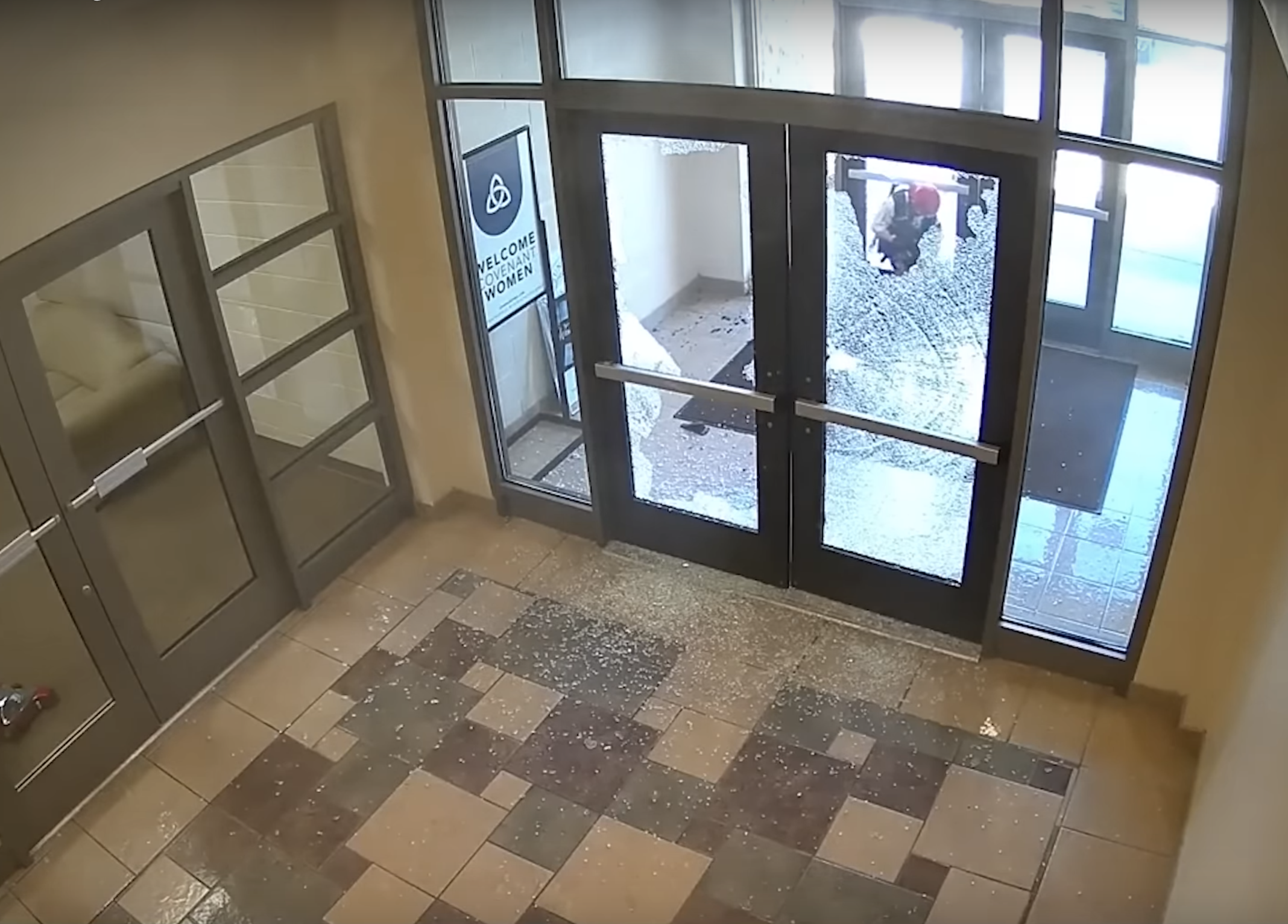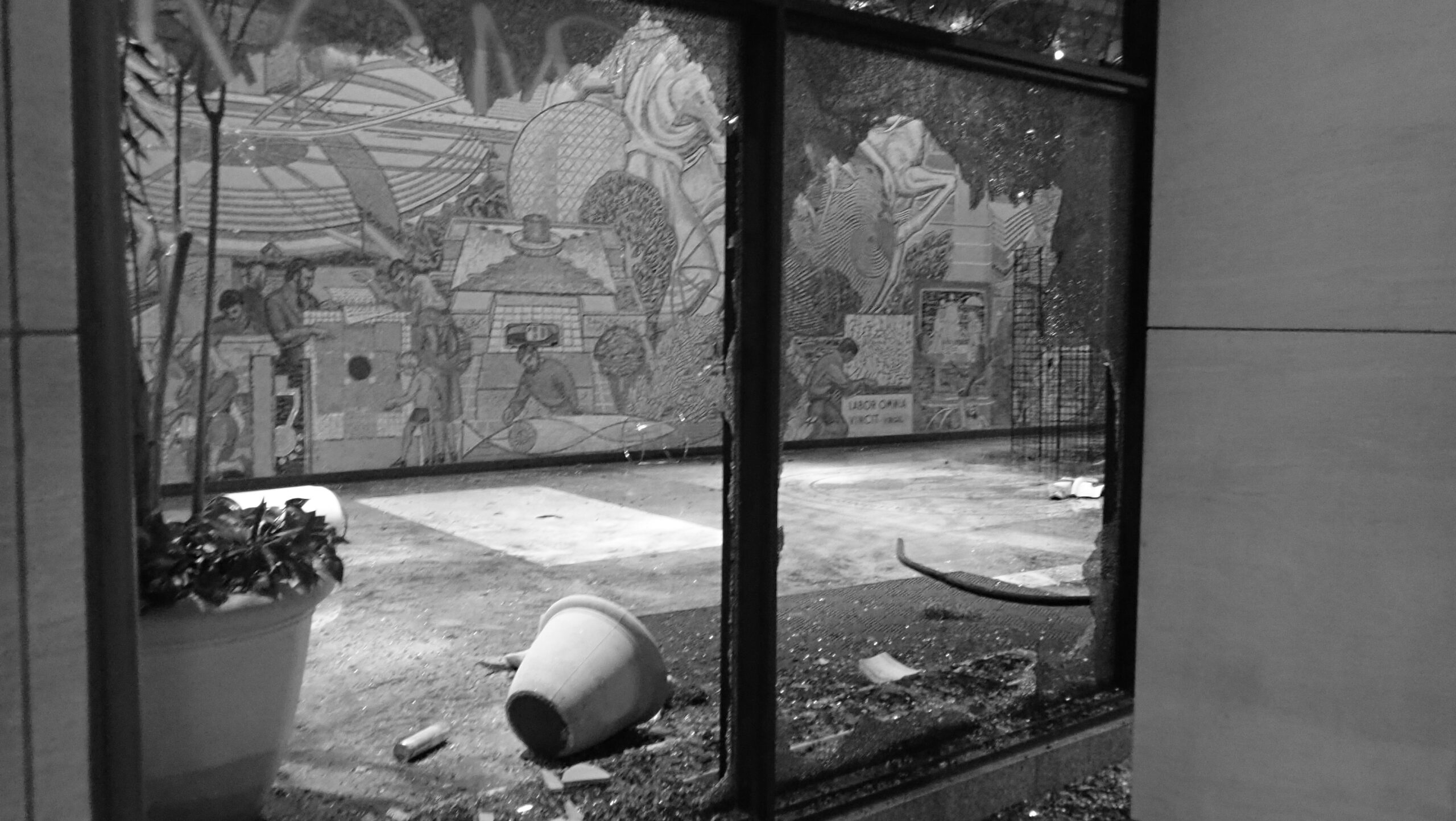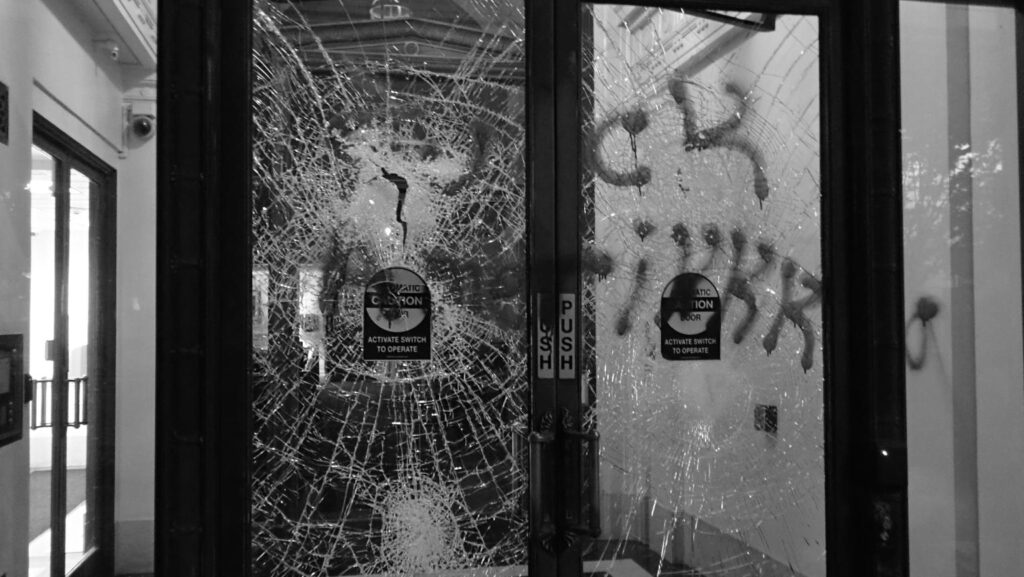
04 Apr Security Film: The Simple Security Stuff
At Blue Glacier we are often surprised at how many losses of life and property could be prevented or mitigated if simple and cost-effective security measures had been implemented. This week a 28-year-old killed six people at a private school, including 3 children. In CCTV footage, the shooter is seen entering the school through the bottom half of one of the front doors after blasting through the door’s glass windows (for some reason, the footage skips the shooter entering through the second set of doors).
In South Jordan, Utah, a music store was burglarized in early January 2022 (the store owner’s seventh burglary according to him). The exact method of entry is not known, but the owner has said the burglars “Broke the window, a couple windows, the door, stole a lot of guitars, ukuleles.” And in the news segment (0:58 in the video below), the shattered glass from the door is visible inside the store. The owner estimates the burglaries stole $20,000 worth of instruments.
We also saw damaged glass doors and windows in some of the vandalism that occurred in late May 2020 in Washington, D.C. Damaged buildings included the headquarters of the AFL-CIO, where vandals and looters were able to enter the inside of the building after breaking the windows.

Broken windows at the AFL-CIO building in Wash, D.C. May 2020. Copyright Blue Glacier Security & Intelligence LLC
In early-April 2018, burglars broke the front door windows of a gun store in Houston. They then attached a chain tied to a pick-up truck to gain access to the store (0:48 of the video below). The burglars stole may firearms.
What do all of these incidents have in common other than the breakage of glass doors and windows? All of these perpetrators could have been significantly delayed in their entry to these premises if the school, stores, and organizations employed one of the most cost effective materials in the security industry: security film. Security film is basically a laminate that is professionally installed and can significantly delay illegal entry into premises. There are various types of security film, which can vary by thickness, sun reflection, and color.
There is no commercially available security film that is officially certified as bullet resistant. However, for most businesses and organizations, the main purpose of security film is not to stop bullets but rather to delay entry into premises. Correctly installed, high quality security film can significantly delay illegal entry, deterring further attempts to break in because of the level of effort required and the noise caused by these efforts (e.g., hammering with various tools). The picture below we took in Washington, D.C. in late May 2020, shows one of the few doors we examined that clearly had some sort of security film installed. While severely damaged, it is clear the security film stalled the would-be intruders. The organization will still need to repair the glass door–security film, like many security measures, does not prevent damage.

Damaged glass door at a building in Wash, D.C. May 2020. Copyright Blue Glacier Security & Intelligence LLC
But usually, the cost to replace a glass door is far less than the costs incurred from stolen goods and damage to interior spaces. Likewise, the goal of security film is not to prevent or deny entry to the premises. The goal is to delay illegal entry.
Why do so many organizations not install security film? Lack of awareness. One reason is that most people skip a security risk assessment or have such an assessment conducted by individuals and companies not qualified to do so. Most companies will jump straight to who the security industry refers to as “integrators”–the experts who sell, install, and integrate security systems such as intrusion detection systems, access control systems, and cameras. But this is analogous to going to a car mechanic and requesting a new engine without the benefit of a diagnosis. You need a diagnosis, or assessment, of your risks before mitigation measures are subscribed. An integrator or vendor is unlikely to have an interest or expertise in subject matters outside of what they’re selling and installing.
It is very likely that many companies and organizations that have suffered break-ins through glass doors and windows either never commissioned a security risk assessment or had such an “assessment” accomplished by someone unqualified to do so. Our proof is in the easily broken glass that was once installed in door frames and windows. Another possibility is that a decision maker declined to install security film despite the minimal cost and thus accepted the risk, against the recommendation of a risk assessment.
Security neither has to be cost prohibitive nor so restrictive that owners, employees, and customers feel they are imprisoned. Often, security mitigation can include measures that are consistent with the organization’s culture, are cost effective, and are simple.
No Comments